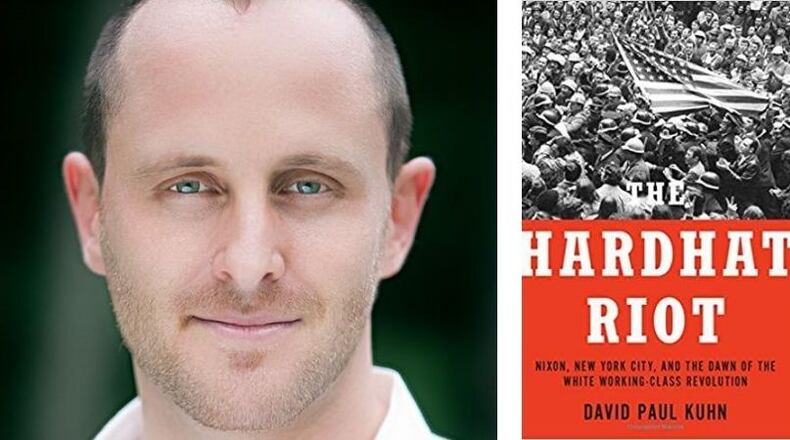Following the shootings at Kent State, antiwar protesters surged into Manhattan. Kuhn recounts how rising tensions finally boiled over.
Fifty years ago, New York City was still a booming hub of industry. The city was a manufacturing center and the construction trades were going full bore as building projects that included the World Trade Center were providing livelihoods for thousands of blue-collar workers.
In 1968, President Richard Nixon got elected to his first term in office by a narrow margin as the United States remained mired in the Vietnam conflict. Two years later the prospect of an imminent de-escalation of hostilities was shattered when Nixon expanded the war by unleashing bombing raids on neighboring Cambodia.
The Cambodia bombings triggered what happened at Kent State. Soon thereafter antiwar protesters were swarming through the streets of Manhattan. Most of them were young. Many of them were what were known in those days as hippies. They were chanting and waving signs. As the police tried to maintain order, some of the hippies were verbally abusing them.
Meanwhile thousands of construction workers in Manhattan were mobilizing to spend their lunch hours confronting the hippies downtown. Many of these blue-collar workers were wearing hardhats.
They considered themselves to be patriotic supporters of their country.
At City Hall, John Lindsay, the liberal Republican mayor, had the American flag flying at half-staff in memory of those who had died at Kent State. On that fateful day there were thousands of hardhats and thousands of hippies yelling at each other. The police were supposedly keeping the peace.
Hardhats didn't appreciate that our flag wasn't atop the flagpole.
They didn't like the things hippies were shouting at them. A hippie's Viet Cong flag provoked rage. Mayhem ensued. The hardhats attacked the hippies. It got quite violent.
Some police officers chose to overlook the assaults. Office workers flung confetti and ticker tape from office towers high above and cheered as the hardhats, feeling empowered, wreaked havoc at the very spot where George Washington had once been inaugurated.
Incredibly, there were no fatalities. One hardhat was arrested. This incident was emblematic of the force then shattering the liberal political coalition once assembled by Franklin Delano Roosevelt. The blue-collar workers who had been a reliable bulwark for the Democrats were then morphing into the so-called Silent Majority that has been much more likely to vote for Republicans ever since.
ABOUT THE BOOK
“The Hardhat Riot — Nixon, New York City, and the Dawn of the White Working-Class Revolution” by David Paul Kuhn (Oxford University Press, 404 pages, $29.95)
Vick Mickunas of Yellow Springs interviews authors every Saturday at 7 a.m. and on Sundays at 10:30 a.m. on WYSO-FM (91.3). Contact him at vick@vickmickunas.com.
About the Author


